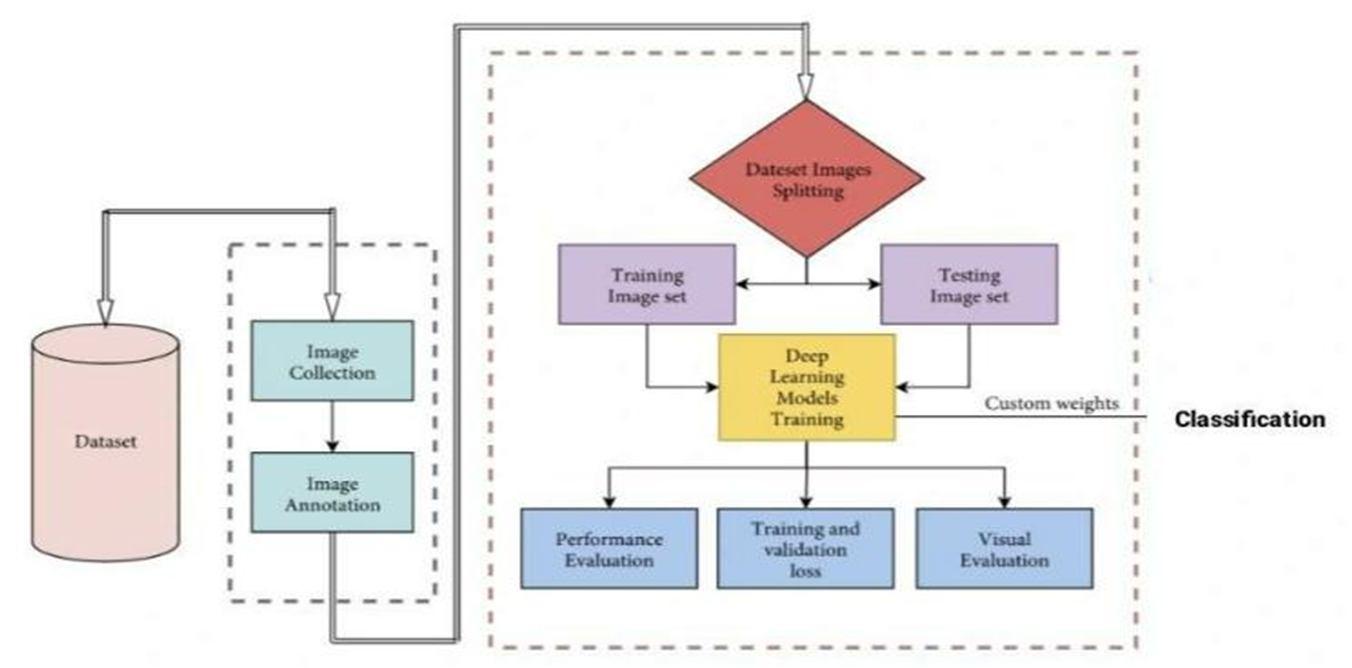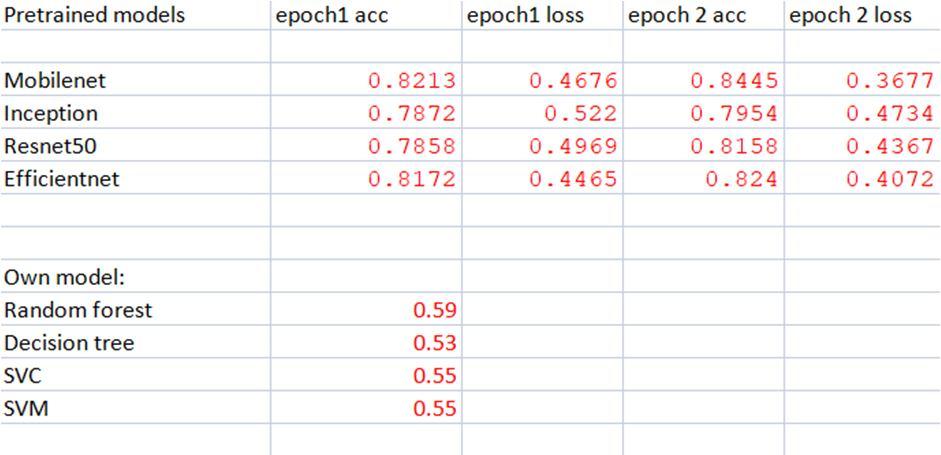
3 minute read
International Journal for Research in Applied Science & Engineering Technology (IJRASET)

ISSN: 2321-9653; IC Value: 45.98; SJ Impact Factor: 7.538
Advertisement
Volume 11 Issue III Mar 2023- Available at www.ijraset.com
B. Data Preparation
The picture data used as input will be a large dataset with many photos. Resize the photos to 256*256 to convert them to a common format. The label encoder is used to convert all pictures. Defining simple and pothole trained data as model input.
C. Data Splitting
Data is classified into two types: training and testing. We must proportionally split the full data collection. For highway road datasets, 80 percent would most likely be utilised for training, while 20 percent are going to be employed for testing. For muddy road datasets, 60 percent will be used for training and 40 percent for testing.
The training dataset is a subset of the broader dataset from which the model is trained. A testing dataset is a subset of the training dataset that is used to put learnt models to the test.
D. Advantages of Proposed Solution
1) Deep learning models are used to forecast the accuracy of the characteristics being analysed .mobilenet, inception, resnet50, efficientnet are the models. First, we chose each model one by one and trained it with training data from that model. The trained model is stored as h5 after successful training.
2) The prediction is then performed with each model, and its accuracy is assessed using the test dataset.
VI. WORKING ENVIRONMENT
A. Hardware Requirements
1) PC, Mac or laptop with x86-64 (64-bit) compatible processors.
2) Operating System: Linux, Windows, macOS
3) RAM: 16 GB or greater recommended
4) Storage: 500 GB SSD or greater recommended CPU: 2.1 GHz or faster Architecture: 32-bit or 64-bit
B. Software Requirements
1) IDE: (Any one of these)
2) VScode
3) Google Collab
4) Jupyter Notebook
5) Language: Python
6) Concept/ Technology: Deep Learning, CNN, ML,
7) Dataset (Trained & Tested): FER-2013
8) Libraries: NumPy, pandas, seaborn, matplotlib, cv2, os, TensorFlow, karas, Sklenarn-metrics, Conv2D, Dense, Batch Normalization, Activation, Dropout, MaxPooling2D, Flatten.
VII. METHODOLOGY
A. System Architecture
ISSN: 2321-9653; IC Value: 45.98; SJ Impact Factor: 7.538

Volume 11 Issue III Mar 2023- Available at www.ijraset.com
The ResNet-50 model is divided into five stages, each of which includes a convolution and Identity block. Every convolution block has three convolution layers, and every identity block has three convolution layers. There are about 23 million trainable parameters in the ResNet-50. To fine-tune the model, we utilised Dropout, three dense layers with Relu, and one thick layer with Softmax. Inceptionresnet v2 mode use factorization to restrict channel size, hence reducing overfitting. The number of boundaries was also reduced, as an increase in the number of residual squares between beginning modules results in a large number of beginning modules. To fine-tune the model, we utilised Dropout, two dense layers with Relu, and one thick layer with Softmax.
Mobilenet is indeed an image recognition model that uses the input picture to generate the return frame and object class. This Single Shot Detector (SSD) object detection model makes use of Mobilenet as a backbone to deliver quick object identification that is optimised for mobile devices.
EfficientDet is an object detection model that employs many optimization and backbone changes, including the usage of a BiFPN and a compound scaling strategy that equally scales the resolution, depth, and breadth for all backbones, feature networks, and box/class prediction networks at the same time.
B. Classification and Detection

We completed all the preprocessing parts and the features are now more than ready to go to the next phase which is classification algorithms. We have applied four different algorithms of machine learning and all of them did a very good job at classifying and detecting the potholes. We are going to elaborate each of them down below.
1) Decision Tree: Decision Trees are types of directed machine learning in which information is separated by a predefined boundary. Two items, in particular decision nodes and leaves, can help to clarify the tree. This is one of the most popular machine learning algorithms. Despite the fact that this method provided the least accuracy. That didn't seem to operate properly with our system. It provided us an 53% test set accuracy and a 57.72% validation accuracy.
2) Random Forest: This method is made up of numerous decision trees that have been bootstrapped together. It is a well-known algorithm. It gave us a real positive prediction accuracy of 100%, which is an incredible result, and a true negative prediction accuracy of 85%, which is a somewhat less anticipated outcome. This algorithm detects potholes with a test set accuracy of 59.87% and validation accuracy of 62.96%.
3) SVC: Support Vector Classifier (SVC) is a supervised machine learning technique that is commonly used for classification problems. SVC works by mapping data points to a high-dimensional space and then determining the best hyperplane for categorising the data. Sklearn SVC is an SVC implementation supplied by the well-known machine learning toolkit Scikitlearn. It provided us with 55% accuracy for test sets
4) SVM: Support vector machine, is a common supervised machine learning technique. It is quite good at categorising and detecting. Our features have a prediction accuracy of 99% for genuine positives and 94% for true negatives, which is superior than any prior ones. It provided us with 55.46% accuracy for test sets and 55.45% accuracy for validation. Which is likewise not much better than the prior ones.

Flow Chart
Flowchart depicts the flow of tasks processing in the system from input to output. A CNN model will be learning and getting trained based on the input images in the ML Classification stage.




